Restaurants & Food
Do restaurants make food less spicy for white people? A Slate investigation.
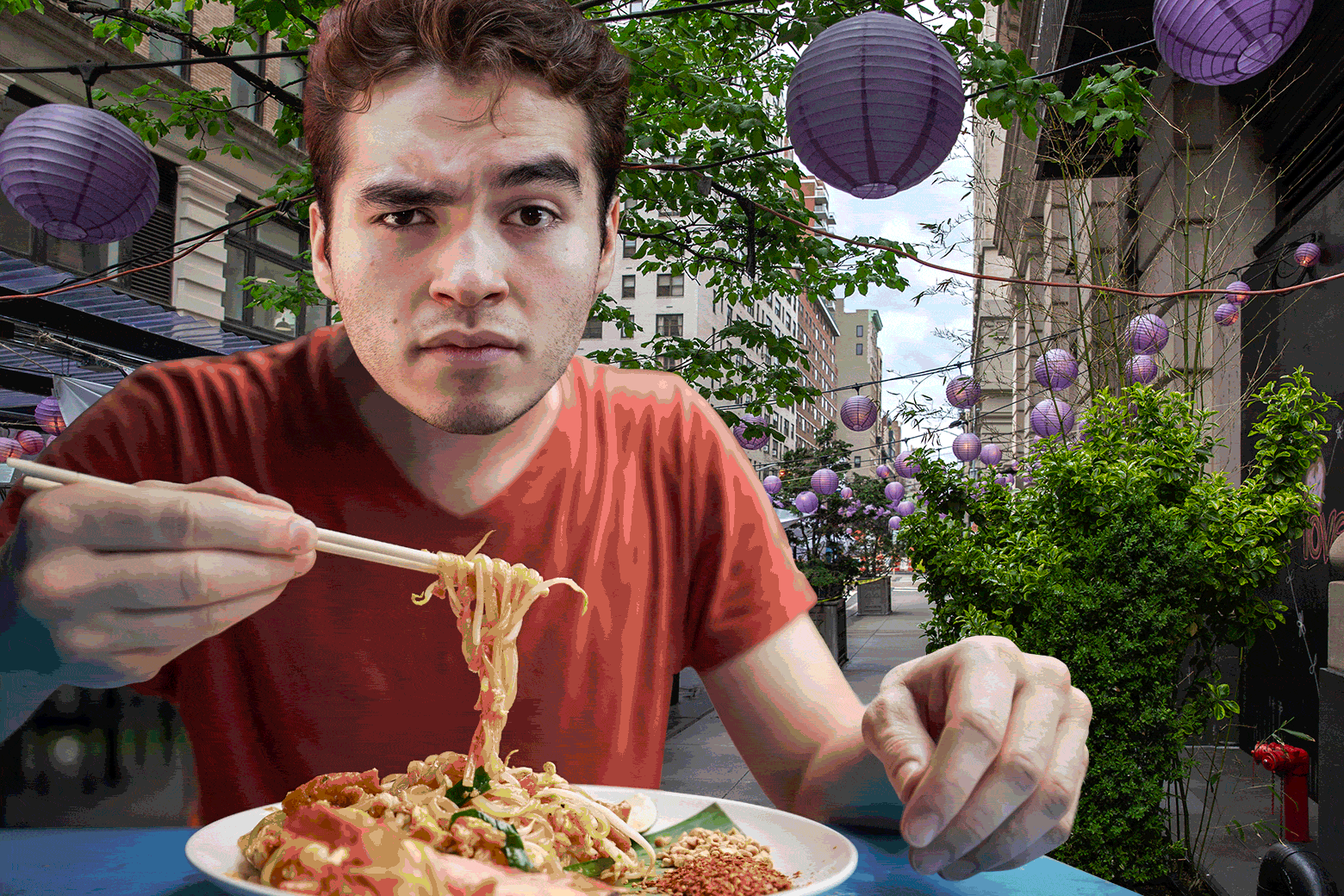
Sign up for the Slatest to get the most insightful analysis, criticism, and advice out there, delivered to your inbox daily.
It’s a suspicion I’ve always brushed off as ridiculous when heading to an Asian restaurant—that is, until a few Chinese friends and my Indonesian girlfriend suggested it unsolicited. They’d try my dish and remark that it lacked spice (as in heat), then inform me in complete seriousness that the chef probably lowered it because I’m white.
“Let me order the spicy dish for you next time,” I’d be told, like a child.
The purported association between whiteness and spice tolerance is amusingly frustrating, considering how much I love spicy food, as I imagine many other white people do as well—especially those of us who have an unhealthy fascination with hot sauces. But sometimes when I order, the heat level does at least seem less than described, and when I do request a higher level, I’m occasionally warned with “Are you sure?” It’s understandable if so. There must be overly sensitive white people out there, constantly demanding refunds before bursting into flames, who are ruining it for the rest of us. They do that with a lot of things.
Gaze across the whiny internet landscape and you’ll find countless Reddit forums and Quora questions and X posts wondering as much. One Redditor tells of asking the server at a Thai restaurant for a spice level “as hot as if they were feeding their family,” at which point the chef came out to confirm he actually wanted that, saying that no refunds would be issued. Another Redditor claims he worked at an Indian restaurant, and “they’ll definitely make it a bit milder for white people.” Speaking of South Asia, my editor related a tale to me of a white woman who went with some Indian friends to order takeout, and when the friends asked for the food to be “Indian spicy,” the server just shook their head and refused until it was explained that the woman was ordering separately.
Over at X, Jeremiah Johnson writes, “There’s a real struggle I go through whenever I find a new southeast Asian or Indian place, where I have to really work to get them to give me actually spicy food instead of spicy-for-white-people food.” But he later adds, “In their defense, I’m so visually white that I border on translucent, so I get it.”
Even considering the hefty weight of these totally anecdotal testaments, I still have trouble taking the mechanics of such vague assumptions seriously. How would it work exactly? Does the server walk into the kitchen and subtly nod to the cook to ease off on the red pepper? Is a small W written on the order ticket? Do they install a special Caucasian button underneath the table so the waiter can press it like a clerk during a bank robbery? There must be code words for liability reasons: “We’ve got a macaroni and cheese sitting at Table 3,” he whispers into his collar. “Put that fire out.”
Chef Nick Wong, who co-owns the Asian American diner Agnes and Sherman in Houston, and has worked with the Momofuku Restaurant Group in New York, doesn’t entirely buy that restaurants have the time to adjust spice levels depending on what census box you tick.
“You mean you have this entire other set of SOPs [standard operating procedures] in place?” he asked. In restaurants, he said, “it’s like a decision tree, if this, then this—servers have enough to do that maybe they’re not trying to figure that out. OK, if they say they want this, we should knock it down one level, and it’s because of these specific parameters. That’s a lot of mental juggling to deal with on a Friday night at 7:30 dinner rush.”
This is not to mention that the classic spice star (or 🌶️ 🌶️ 🌶️ or 🥵 🥵 🥵) system isn’t set according to some centralized rulebook, any more than movie review star systems are, so a three-star drunken noodle dish at one joint may taste like a one-star at another. Of course, if restaurant staffers see a pattern of complaints about heat levels in a dish, they might adjust accordingly, perhaps in suburban areas or among older clientele, for whom higher spice levels and certain more pungent flavors might not be as prevalent or familiar.
“I can see it from a business owner/chef’s perspective: We keep getting complaints about this—let me just preemptively strike this, as it were, and make it a little less spicy,” said Wong. “So it could be a thing, even though I’ve never personally experienced it.”
There is another obvious wrench in the whole whitewashed spice narrative, and it’s probably covered in hot sauce. You may have noticed an entire area of the country called the South, where there’s a beloved subgenre of food singed in numerous forms of heat, and it often can be found with a white person sweating over it. But even without that, one can’t help but notice that white people throughout the country have an irrational obsession with hot sauce. There are festivals and shows and stores dedicated to the stuff. So the idea that all white people are getting the vapors and fainting after consuming a three-star pad thai is a bit hard to take. Plenty of communities obviously like hot sauce, but white people—usually guys lacking hobbies, let’s be honest—take it pretty far.
“I don’t think a lot of other ethnic cultures are like, ‘Let me get the 10-million-Scoville hot sauce,’ ” Wong joked. “They’re just eating food. No one’s trying to reach these altered-state-of-mind spice levels.”
The myth of white people getting served lightweight food is thought to occur not only at Chinese and Thai and Indian restaurants. It’s projected onto Mexican, Middle Eastern, African, Latin American, and Vietnamese establishments—basically, anywhere they don’t serve chicken fried steak, a white person is supposedly being cheated out of spice. While this notion of white people not handling their heat may be an exaggeration, it belies a much bigger and pernicious one: Not all so-called ethnic food is hot and/or spicy, and many white people have this silly idea that all nonwhite people grew up eating piles of chilies for breakfast, lunch, and dinner. They don’t, of course, and can be as sensitive to heat levels and different aromatic flavors as anyone else.
When I first reached out about this article idea to Krishnendu Ray, professor of food studies at NYU Steinhardt, he responded, before I’d asked any questions, with a bullet-point dismantling of generalizations around spiciness and racial or ethnic palates:
-
Such claims usually confuse aromatic spices and chilies;
-
Most cuisines of the old world (India, China, Vietnam, Thailand, etc.) did not use chilies until ca. 1900;
-
Elite White Europeans used a lot of spices in their food until around ca. 1750 [when it gradually fell out of fashion, on which more below];
-
There is nothing “authentic” about Black or Brown people using more chilies;
-
Authenticating associations of non-white food with chilies is reductive and unimaginative.
It’s not necessarily something you’d put at the beginning of a menu, but it does have a Ten Commandments feel, doesn’t it? The debate focusing on heat in food tends to mischaracterize the subtlety of flavors and creates a needless binary in which all parties involved either eat only spicy food or never touch the stuff.
“Most of this is just ill-informed stereotypes of each other’s food,” Ray said. “A lot of this argument about spiciness conflates new world cultivar—chilies—which come mostly from Central America, and spiciness. For me, it’s a classic, peculiar form of Orientalism, where you conflate all the nonwhite people, East and West, into one kind of spiciness. This conflation leads to the assumption that [in cooking] you don’t need skill, you don’t need subtlety, all you need is a heavy-handed use of spice to make it authentic.”
While Ray told me he enjoys the jokes about white people and spice, he doesn’t actually believe that restaurants are automatically lowering spice levels as a result. He sees the opposite, with heat levels in food needlessly raised to cater to them and others.
“I’ve been watching in New York City, and the spice levels have been ratcheted up so much as a sign of authenticity that I find most of the Indian food here inedible,” he told me. “In some ways it’s a dialogue, and it’s a dialogue where we are not explicitly talking to each other. We are assuming things about each other. … It’s a good joke, but I don’t think it’s true.”
That said, the spice queasiness association is not without historical context. As Ray explained, although European elites did use many spices in their food until around 1750, they began to “de-spice,” in a sense, as the continent rose in power, and cultivated their own identity around food, often prizing herbs instead of spices. In Europe, the notion emerged that food should taste of itself, and one can see how that approach may have filtered its way down to British and some American cuisine over the years. Even white Americans make fun of the blandness of British food (which is fine, if a bit unfair), but then don’t also complain when an ethnic restaurant makes the same mistaken assumption and lowers the spice level on you.
Clearly what’s needed to find the truth here is a totally unscientific experiment. The ridiculous parameters are simple. I’d show up to a local Thai place and continue to be white, and my lunch companion would continue to be Southeast Asian. We’d order the same high spice level of the dish covertly at separate times, with me ordering alone first, and her arriving at my table a little later to place her own. Then the crux of the test would be conducted, by casually doing what we’ve done dozens of times already: trying each other’s food. We’d compare notes afterward.
Now, I’d love to tell you that my girlfriend received a volcanic pad see ew while I got a cold plate of egg noodles with ketchup, but there was no difference between the two. Both were respectably spicy, and in fact, she found hers too much so to finish. “Too hot?” the owner asked her when she requested a to-go box. “It’s too hot for me as well. I always get mild.” So what can be learned from this NASA-with-full-funding-like study? People have different tastes, apparently. And, somehow, I didn’t settle all racial tensions by ordering food I already like.
Are there some ethnic restaurants in certain regional areas lowering the heat level when they see a horde of white yokels approaching? Perhaps. It may have really happened to this yokel a few times too. But we also can safely assume there are other restaurants needlessly jacking up the heat for a table of white coked-up Wall Street execs obsessed with Scoville units. That’s multiculturalism for you.
No matter what race or ethnicity you belong to, there’s always a small minority embarrassing the rest in some form. Perhaps we could try to understand that there’s more to food than white-hot levels of heat, and not take it seriously when the spice level is a little lower or higher than it should be because of a bad assumption. Just leave a good tip regardless, and maybe don’t start an international incident over a bowl of curry.
Restaurants & Food
A new Indian restaurant is slinging the best chaat for miles
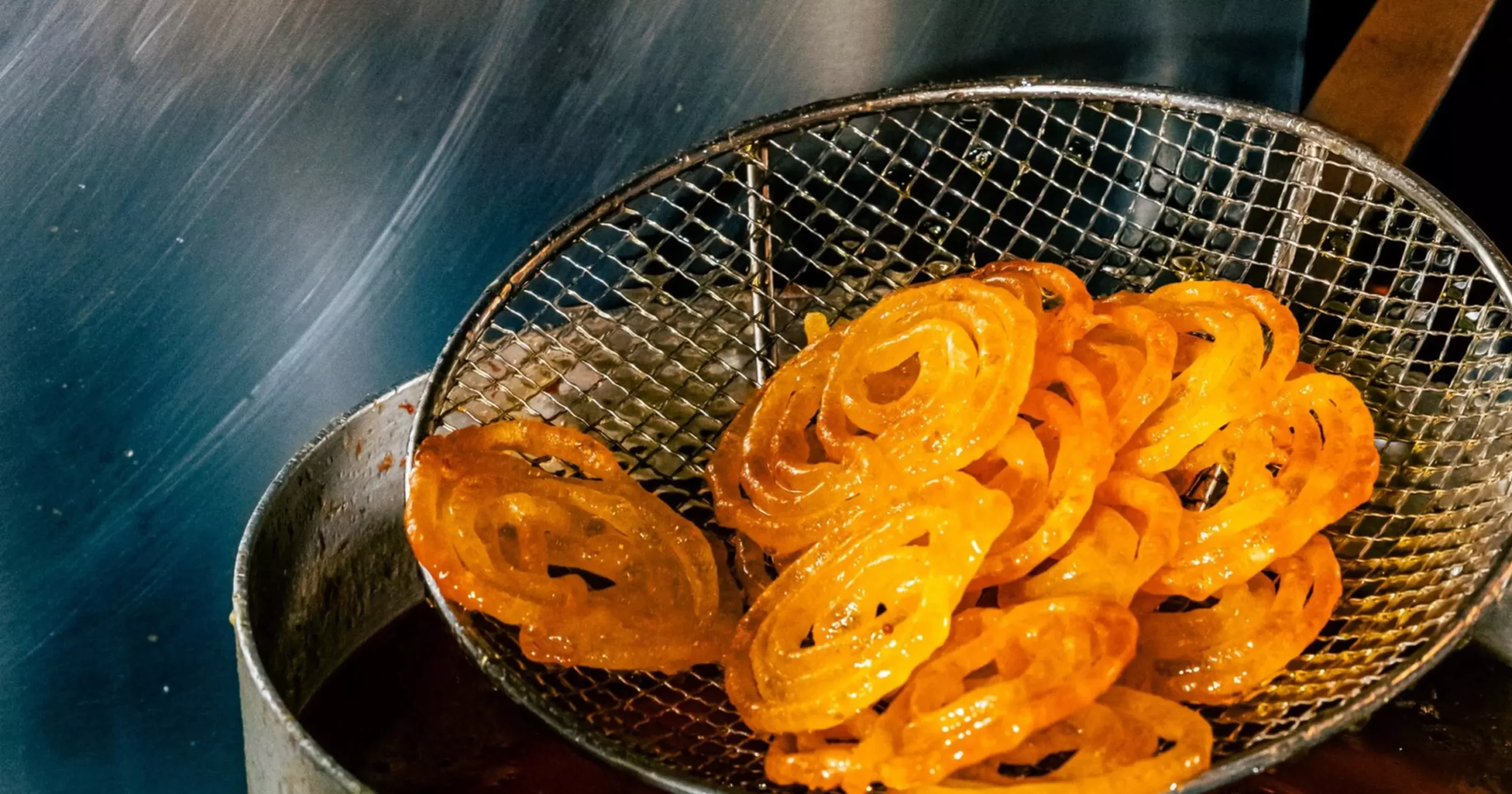
Eat Here Now is a first look at some of the newest, hottest restaurants around — the ones we think are worth visiting. We dine once, serve forth our thoughts, and let you take it from there.
If you ask my two food-obsessed friends who grew up in North India, Jalebi Street — a new mom-and-pop restaurant in the upper Haight — makes the best chaat within a 15-mile radius.
Yes, this means Jalebi Street is even better than the beloved West Berkeley institution Viks Chaat. Fighting words for sure, which is why my friends requested to be kept anonymous. But they aren’t wrong: Jalebi Street’s take on chaat, the sweet-savory (mostly) fried street food snack that originated in North India, is among the best you’ll find anywhere near San Francisco.
The menu also includes other street foods and mains like dal makhani ($16), a rich, time-consuming dish made of slow-cooked black lentils, and saag paneer ($17) topped with a pat of butter. But, at this point, in our chaat-desert of a city, the chaat is what’s getting the buzz.
Jalebi Street’s owners, husband and wife Sam Bhamu and Bhawana Choudhary, opened the restaurant in March, moving it to the city after launching in 2021 as a pop-up in a parking lot in Sunnyvale. “But you can’t do a lot of things in a parking lot,” Choudhary says. They initially made plans to get a food truck but then stumbled on a prime location in the Haight. “It was a shocker when we got it. We were like, ‘Oh, shit — now what are we going to do?”
When I stopped in for lunch in July, the restaurant had yet to hire a dishwasher, so paper plates were being used, which added to the street food vibe. (A dishwasher was being hired and real plates were on the way.) The interior is rather bare bones — decorations are also coming — which is fine, because you’re not here for the atmosphere. You’re here to eat until you ache.
Choudhary, who studied cooking and worked in hotels in India, moved here from Rajasthan last year after marrying Bhamu. His parents own Indian restaurants on the Peninsula. Their wedding was a “set up,” as Choudhary puts it, arranged in part because of the couple’s shared love of food and certainly because both spent their childhoods in Delhi. Bhamu’s brother Vikram Bhamu, a tightlipped cook who won’t share his secrets, is Jalebi Street’s chef.
My friends and I started with the chaat side of the menu, including pani puri ($9), five light-as-air, crisp shells filled with mint and tamarind “water.” They are more fun to eat if you know how to do it properly. My friend demonstrated, spooning in a little of the sweet tamarind water and then — using the hollow shell as a ladle — using her fingers to dip the whole thing into the mint water, the tart-sweet liquid dripping everywhere. (Laughing, her husband said that in India, “The taste of the pani puri is the taste of the sweat of the guy making it on the street.” Luckily, San Francisco has remained at a very unsweaty 65 degrees all summer.)
Up next was the onion kachori ($12), three savory pastries with interiors lined with a thin layer of sweet, aromatic caramelized onions and spices. (The chef will not divulge the spices, not even to Choudhary.) Kachori is a Rajasthan specialty that requires a patient 40-minute fry, a demonstration of deftness if a chef can keep the outside crispy and inside soft without burning it, which he did.
“People travel so far for these,” says Choudary. My friends took a bite and deemed the flaky kachori “great.” We also ordered the kachori chaat ($12) topped with tamarind and mint chutneys, then smothered in tart, cold yogurt and a sprinkling of little fried noodley bits called sev.
From the non-chaat street food options, there’s vada pao ($5.50), one of Bombay’s most iconic street foods and my discerning friend’s all-time favorite. At Jalebi Street, however, the massive starch-on-starch sando, a spicy fried potato fritter on a soft bun, is deemed “Delhi style” (to which my friend sniffed, “Delhi-style vada pao doesn’t exist”) because it’s served with a swipe of sweet tamarind chutney — apparent blasphemy. Though some customers love it, Choudhary knows she’s serving a bite of something divisive. “It’s always the debate,” she admits.
Better yet — and devastatingly delicious — was the Delhi-style chole bhature ($16), a balloon of a blistered, chewy-crispy fried bread pulled apart to release a puff of steam, ready to swipe in a bowl of spiced chickpeas that are darkened by the addition of black tea. Our choice for runner-up was the Rajasthani bedmi poori allo sabji ($15), four smaller, slightly denser, fried and puffed whole-wheat breads served with a comforting spiced potato curry. (My friends’ parents were the first to visit Jalebi Street and loved this dish enough to request that an order be brought home to them.)
And finally, there was the piece de resistance: Jalebi ($8), a sweet made to order from fermented batter that’s fried by piping it directly into ghee, after which it’s soaked in saffron sugar syrup. Considering jalebi is the restaurant’s namesake, there’s a lot of pressure for it to perform.
I’d never had jalebi before, but what arrived — a delicate, golden, transparent, shattering spiral that, with one bite, flooded my mouth with a syrupy-saffrony, eye-popping sweetness — could be a Michelin-level dessert if it just had fancy plating. We ordered it with rabri, a mild, house-made condensed milk scented with lemony cardamom. It’s the perfect foil, providing some equilibrium to the heady sugar rush. One bite and my friend was sold: “Best jalebi I’ve had in the country,” he said.
Restaurants & Food
Award-Winning Street Food Restaurant Mowgli to Bring Indian Home Kitchen to Norwich
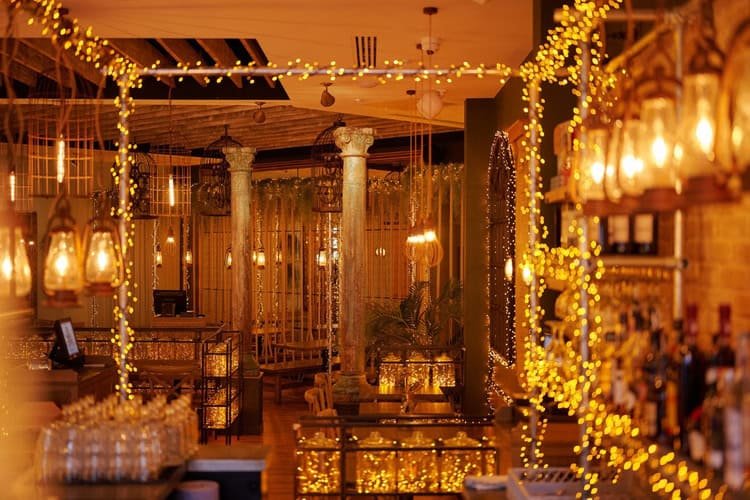
Mowgli Street Food, the much-loved Indian restaurant brand known for its vibrant street food and authentic home cooking, officially opens this week.
On Friday August 8 Mowgli will open its doors bringing its distinctive flavours, design, and charitable spirit to the heart of the city.
Anyone dining during the first week of opening (Aug 8-15) will receive free Chat Bombs, one of Mowgli’s signature dishes at the very heart of their cuisine. The signature Chat Bombs are crisp bread puffs filled with yogurt, spices, chutney and chickpeas, a really refreshing flavour explosion!
Mowgli Street Food, the celebrated Indian restaurant brand founded by Nisha Katona MBE, is bringing its unique blend of home-style cooking and immersive atmosphere to Chantry Square, Norwich.
The new restaurant marks an exciting chapter in the city’s food scene and for Mowgli being the first ever in Norwich.
Mowgli is rooted in the way Indians eat at home and from street food stalls, not traditional curry house fare, but the vibrant, punchy dishes cooked how Indian eat at home.
The restaurant is famed for its iconic ‘chat bombs’, treacle tamarind fries, Keralan fried chicken and Mother Butter Chicken, the real deal!
With interiors inspired by Katona’s ancestral home in Varanasi, diners can expect an amber-glow night market feel, trees strung with vines, and the lively clatter of tiffin tins, all signature elements that make Mowgli an unforgettable dining experience.
“Mowgli is a place to kick back with friends and family, two and four-legged, as we have a passion for the things that matter to you,” says Katona. “It’s about creating a home-from-home, where food and kindness come first.”
General manager of Chantry Place, Jo Bates, says: “We’re really proud to offer such a wide variety of global flavours, and Mowgli is the perfect addition, bringing a true taste of India to Norwich. Its ethos of supporting local charities fits so well with our own and we can’t wait for the doors to open and for shoppers to experience its mouth-watering menu!”
The arrival of Mowgli in Norwich also brings with it the values and mission of The Mowgli Trust, the charitable heart of the business. With over £2.6 million raised donated to local and international causes.
Every Mowgli restaurant works with a handpicked local charity, and in Norwich, the team is proud to partner with East Anglia’s Children’s Hospices (EACH), whose work supports families across Norfolk and East Anglia.
Laura Southcott, Senior Corporate Fundraiser for EACH, said: “We’re thrilled and grateful to have forged this amazing partnership with the Mowgli Trust.
“From our point of view, it’s a fantastic, high-profile opportunity to raise funds and awareness, supporting our vital work across Norfolk and the rest of East Anglia. We firmly believe it’s the start of an exciting relationship, and this venture is going to directly help the children and families receiving our care and support. As well as expressing our gratitude, we’d also like to take this opportunity to wish our friends from the Mowgli Trust the very best of luck with their new restaurant in Norwich.”
Mowgli’s commitment to enriching lives extends to its teams and guests as well as its communities. The restaurant group has been recognised nationally for its culture and care, including multiple accolades for workplace excellence and charitable leadership.
Each restaurant is led by a dedicated Charity Champion, and Mowgli’s teams are known for going the extra mile, from skydives and marathons to bake sales and crocheting, to raise awareness and support for their partner causes.
Mowgli’s expansion is backed by an award-winning reputation. The brand has been named ‘Best Place to Work’ by The Sunday Times (three years in a row), one of the UK’s Best Companies to Work For (four years running) and many hospitality awards.
With 24 restaurants across the country TV personality, Nisha Katona, opened the first branch of Mowgli in Liverpool in 2014.
Dishes are cooked fresh every day with flavourful herbs and spices and is said to be based around “the type of food that Indians cook and eat at home”.
Nisha has worked as a business and food expert on several projects across the BBC, ITV and Channel 4.
Katona received an MBE in the 2019 New Year Honours List for services to the food industry.
BM Caterers Turn Forum Words into Action with Access Champion Appointment
Restaurants & Food
Char kway teow in India? Meet the Singaporeans bringing local food to Mumbai
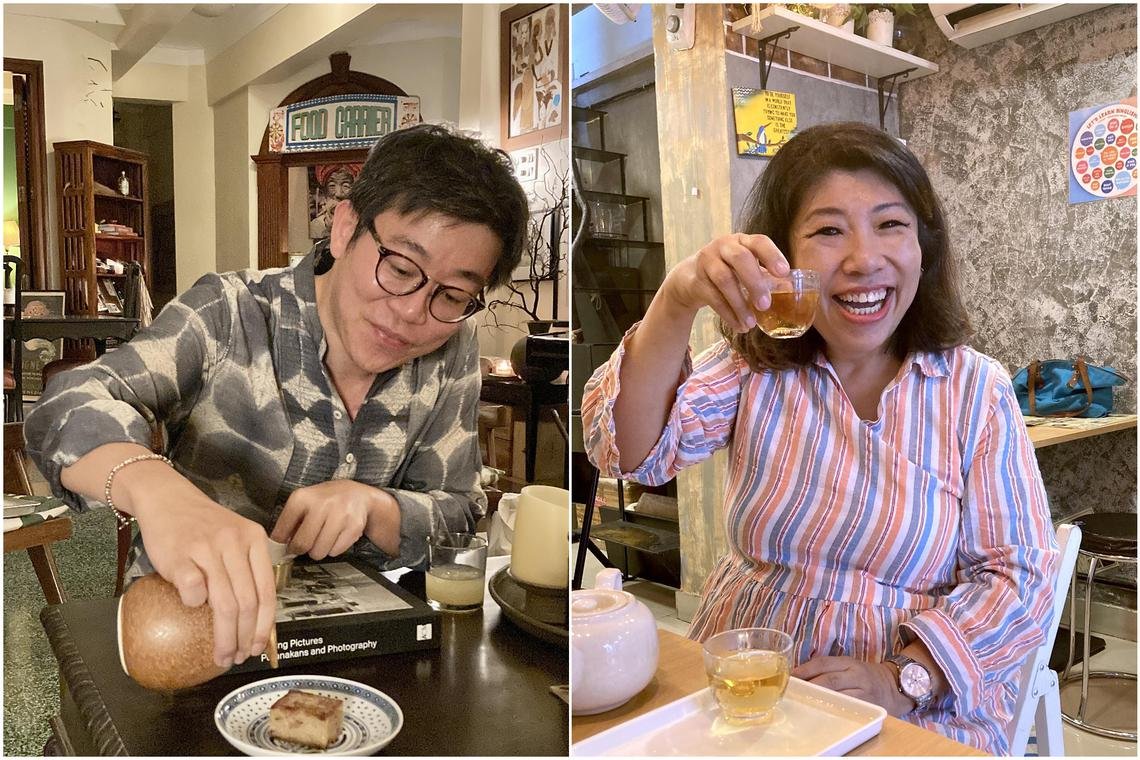
MUMBAI – One runs a supper club that evokes memories of home-cooked flavours, and the other is billed as the city’s first Singaporean street food restaurant.
For these two chefs abroad, food is a way to stay connected to their Singaporean identity.
-

 Brand Stories2 weeks ago
Brand Stories2 weeks agoBloom Hotels: A Modern Vision of Hospitality Redefining Travel
-

 Brand Stories1 week ago
Brand Stories1 week agoCheQin.ai sets a new standard for hotel booking with its AI capabilities: empowering travellers to bargain, choose the best, and book with clarity.
-

 Destinations & Things To Do2 weeks ago
Destinations & Things To Do2 weeks agoUntouched Destinations: Stunning Hidden Gems You Must Visit
-

 Destinations & Things To Do1 week ago
Destinations & Things To Do1 week agoThis Hidden Beach in India Glows at Night-But Only in One Secret Season
-

 AI in Travel2 weeks ago
AI in Travel2 weeks agoAI Travel Revolution: Must-Have Guide to the Best Experience
-

 Brand Stories1 month ago
Brand Stories1 month agoVoice AI Startup ElevenLabs Plans to Add Hubs Around the World
-

 Brand Stories3 weeks ago
Brand Stories3 weeks agoHow Elon Musk’s rogue Grok chatbot became a cautionary AI tale
-

 Asia Travel Pulse1 month ago
Asia Travel Pulse1 month agoLooking For Adventure In Asia? Here Are 7 Epic Destinations You Need To Experience At Least Once – Zee News
-

 AI in Travel1 month ago
AI in Travel1 month ago‘Will AI take my job?’ A trip to a Beijing fortune-telling bar to see what lies ahead | China
-

 Brand Stories2 weeks ago
Brand Stories2 weeks agoContactless Hospitality: Why Remote Management Technology Is Key to Seamless Guest Experiences







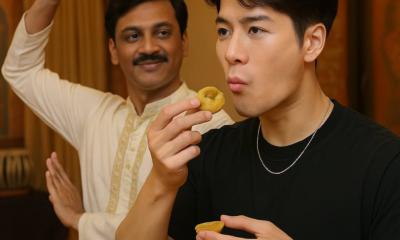





You must be logged in to post a comment Login